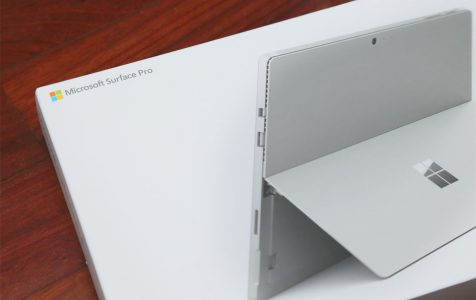The majority of Microsoft Surface devices have received positive feedback from their users. While some were amazed by their speed, others were in awe of their performance and features.
With the Surface line exceeding the expectations of many, there is still no guarantee that it is perfect. We are saying this because some gadget critics and Surface Pro enthusiasts have encountered problems and issues with the WiFi connectivity while using Surface Pro.
According to them, they just cannot connect to a WiFi network. Sometimes, they are unable to detect nearby networks. In some cases, they experienced slow or limited connectivity.
What to Do If Surface Pro 5 Has Connection Issues
If you are among those users who claim that Surface Pro has WiFi problems, then Microsoft has good news: the issue can be fixed. Below is a list of feasible solutions that would work and fix connection issues with Surface Pro 5:
Expert Tip: For smoother PC performance, consider using a PC optimization tool. It handles junk files, incorrect settings, and harmful apps. Make sure it's right for your system, and always check the EULA and Privacy Policy.
Special offer. About Outbyte, uninstall instructions, EULA, Privacy Policy.
1. Install the Latest Updates Intended for the Device.
Microsoft said that some users might be having WiFi problems because they have not yet installed the latest updates for their Surface device.
Ideally, users should always install updates intended for their devices as they are released with the intention of fixing reported errors and issues. However, since some encounter random errors in the process, they prefer to disregard updates.
To install an update, try to connect to a public WiFi network. And then, download the update. If it does not work, you have three other options. First, tap on a wired connection. Second, use a mobile broadband connection that is compatible with your Surface device. Finally, take advantage of your mobile data.
Once you have connected to the Internet, do the following:
- Go to the Start menu.
- Navigate to Update and Security.
- Select Windows Update.
- If an update is available, click the Download button next to it.
- Once the download is complete, install it.
2. Check If the Time and Date Settings Are Correct.
It is possible that the WiFi connection problem is triggered by the wrong date and time settings on your Surface device. To check and fix the incorrect time and date settings, follow these steps:
- Go to the Start menu.
- Open Settings.
- Select Time and Language.
- Double-check if the date and time settings are correct.
3. Restart Your Device’s WiFi Feature.
Another way to fix the problem is to restart your device’s WiFi feature. To do that, go to the Start menu. Click on Settings. Choose Network and Internet. Toggle on the slider next to the WiFi option.
4. Restart Your Device and the Router.
If the problem still persists, you may unplug your router from the power source for about 30 seconds. After that, plug it back in. Press the Power button to switch it on.
Once your router has restarted, do the same with your Microsoft Surface. Go to the Start menu, navigate to the available Power options, and click Restart. As soon as your device has successfully rebooted, connect to a WiFi network again.
5. Reinstall a Wireless Driver.
Oftentimes, a missing or corrupted wireless driver can cause you to suffer WiFi connection problems. To fix it, try reinstalling your device’s wireless driver. Sure, you can manually search for a compatible wireless driver online, but know that this can be very time-consuming.
Your best option is to use a third-party driver updater. In just a few clicks, you should be able to find and install a wireless driver that is compatible with your Surface Pro model.
6. Use Your Device’s Built-in Troubleshooter.
If you feel like exploring other options, you can also try running your device’s built-in network troubleshooter. You can access it by typing in “troubleshooter” in the search box and hitting Enter.
Once the troubleshooter appears, select a Troubleshooting option that works for you. Usually, you are presented with three options. These are Network, Internet, and Network Adapter.
7. Diagnose Your System.
Diagnosing your system can also fix your WiFi connectivity problems. To diagnose your Surface Pro, we suggest that you install a PC repair tool and run a complete scan of your system. With a reliable tool, you can quickly locate speed-reducing problems, app errors, and junk files that are affecting your device’s efficiency.
8. Consult an Expert.
If all else fails, your last resort is to have your Surface Pro checked by an expert. There might be underlying software or hardware issues that are triggering the problem. Have these issues verified and fixed first and then check if the issue surfaces again.
For those of you who are not confident in their troubleshooting skills, this option works best. You wouldn’t want to mess up with your Surface Pro’s hardware or software and cause irreversible damage, right?
Conclusion
The next time you experience connection issues with your Surface Pro 5, do not panic. Instead, go over the eight solutions we have listed for you above until you find a fix. Don’t worry because they’re easy to follow, so you should be on the right track.
What other Surface Pro problems have you encountered? Let us know below!
